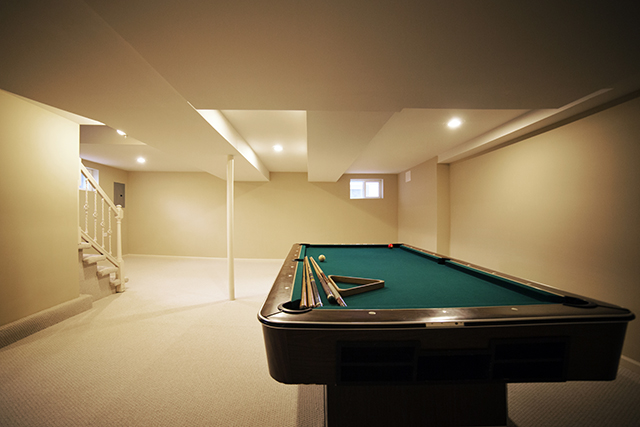Are you dealing with a flooded or wet basement? Does your basement always feel damp with humidity or have cracks that seep with water? Much of what causes your basement to have problems with intrusive moisture or groundwater is something called hydrostatic pressure. This pressure is created by water outside your foundation as it comes to sit against your foundation walls. As the pressure grows, groundwater can get pushed through the cold joints of your basement as well as through any cracks present.
To waterproof your basement, you’ll need to have the right measures in place to deal with the sources: water and hydrostatic pressure.
Let’s investigate best waterproofing for basements to ensure that your foundation remains dry and undamaged by water!
Sump Pumps with Battery Backup
One of the key parts to an interior basement waterproofing system is the sump pump. Installed in a sump pit where intrusive water is collected, the sump pump is what pushes that water out of your basement via a discharge pipe. That water is moved to a location far enough that it shouldn’t be able to reach your foundation.
The reason for having a sump pump with a battery backup is to ensure that your basement waterproofing
Moisture Vapor Barriers and Rigid Sealers
If your basement is prone to feeling humid and damp, there’s a good chance that moisture is seeping into your basement through the walls. Concrete is porous in nature, giving moisture a way to seep through. Through capillary action, water is also able to be absorbed into the concrete wall and sweat out of the wall inside. A moisture vapor barrier can help contain that moisture, keeping it away from your basement.
Meanwhile, if your basement walls are sweating or leaking water, the moisture vapor barrier will guide the water down to the rigid sealer, which provides extra guidance to the drainage channels.
Drainage Channels
Installed along the perimeter of your basement interior, drainage channels are situated either on top or beside the footer. Holes in the sides of the drainage channels allow groundwater to enter. Then the drainage channels guide that water towards the sump pit.
There are different kinds of drainage channels out there. The best drainage channels will offer high quality materials and high volume to capture more water.
Dehumidifier
To create a last line of defense against moisture, having a dehumidifier installed into your basement will help ensure that your humidity levels remain at a steady level. It is crucial to keep your humidity levels below 55% to prevent mold growth.
Other problems may arise if water or elevated levels of moisture is allowed to linger in a basement. Let’s have a look at what unwelcome things a wet basement may invite…
Problems Caused by Wet Basements
When water leaks into a basement and as moisture builds up, your basement can become subjected to a range of problems. If not addressed, any of these problems can eventually cause more problems throughout your home’s living spaces. Here are some of the most common examples of wet basement problems…
- Mold growth
- Wood rot
- Pests
Aside from causing invasive groundwater and moisture intrusion, the hydrostatic pressure on the outside of your foundation wall can also cause problems of its own…
- Foundation cracks
- Water leaks through foundation cracks
- Bowing/leaning walls
- Shearing in concrete block walls
These problems will only get worse as time goes, which means even more repairs to be done. By targeting that hydrostatic pressure with a comprehensive interior waterproofing system can provide the best chance of keeping moisture and groundwater out of your basement. That will, in turn, keep the problems away. To make sure your basement waterproofing does its job, be sure to do your research when determining who may be the best basement waterproofing company for your home.

